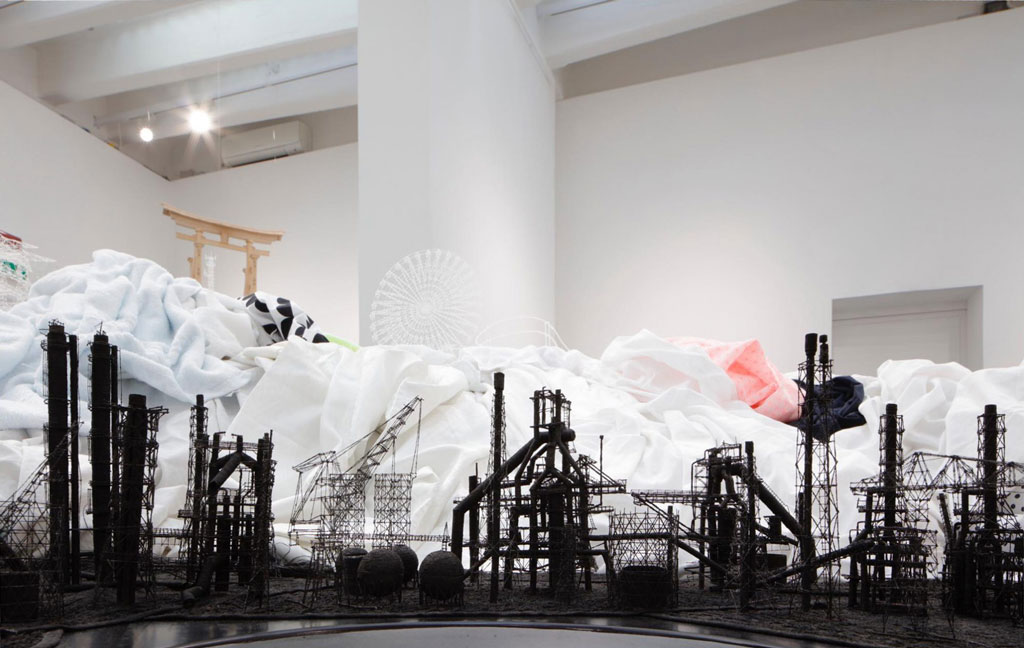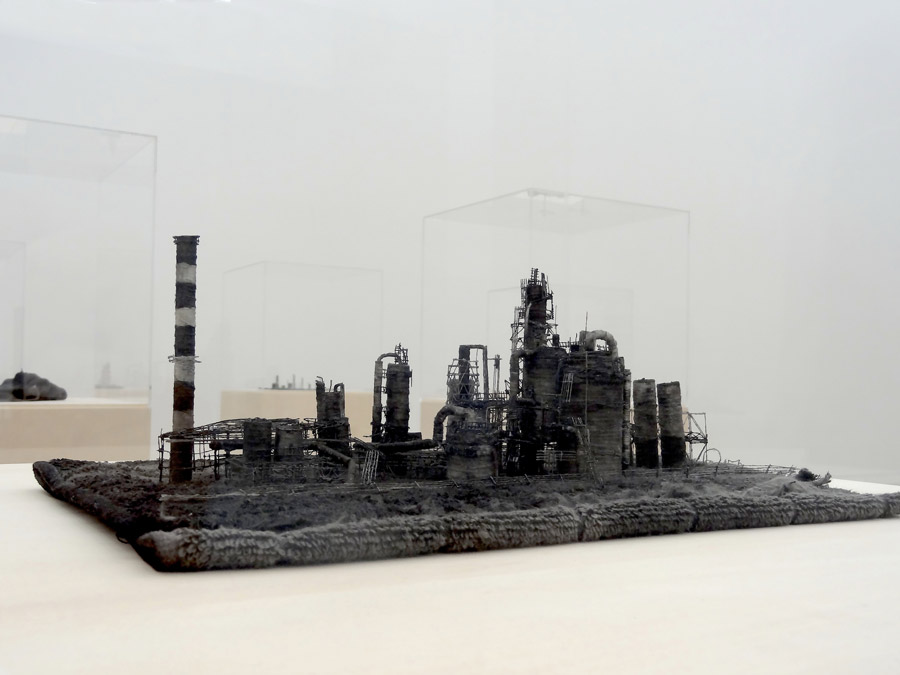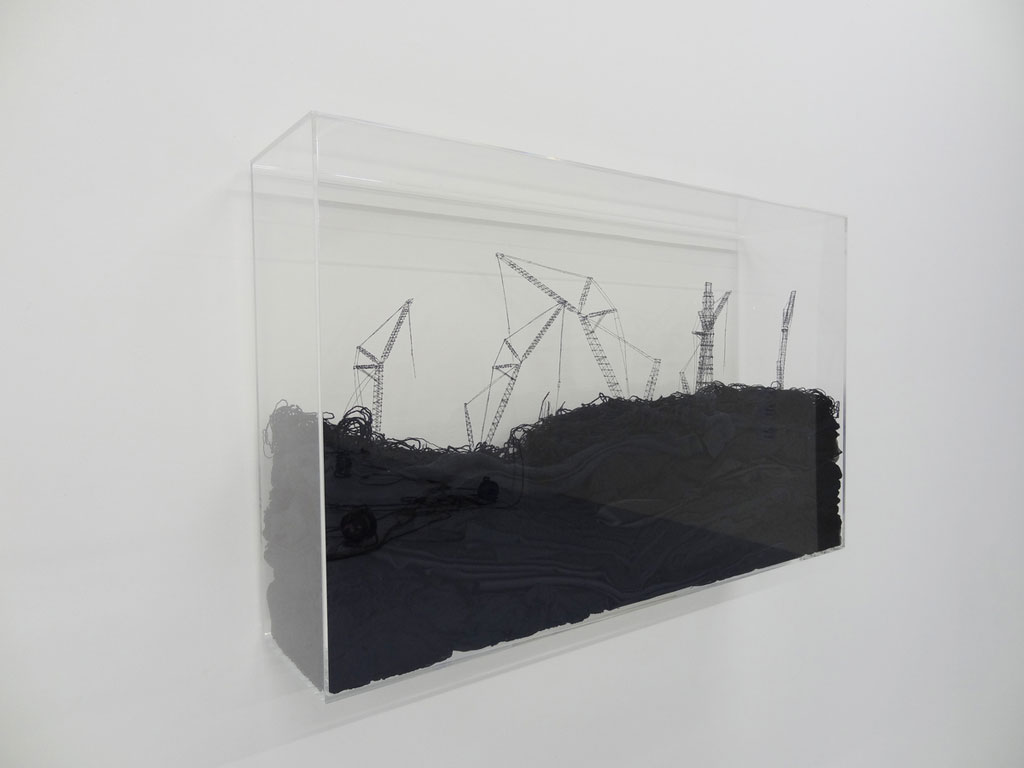ART-TRIBUTE:Weaving and other Practices… Takahiro Iwasaki
 We continue our Tribute with a leading figure in Japan’s new generation of artists, Takahiro Iwasaki (1975- ), who sculpts miniature landscapes from unexpected materials. Bath towels, electrical tape, toothbrushes and human hair transform from the mundane to the extraordinary. Drawing on Japan’s industrial history, Iwasaki recreates works that present a snapshot of a bygone era. that have left a psychological imapact on contemporary audiences.
We continue our Tribute with a leading figure in Japan’s new generation of artists, Takahiro Iwasaki (1975- ), who sculpts miniature landscapes from unexpected materials. Bath towels, electrical tape, toothbrushes and human hair transform from the mundane to the extraordinary. Drawing on Japan’s industrial history, Iwasaki recreates works that present a snapshot of a bygone era. that have left a psychological imapact on contemporary audiences.
By Dimitris Lempesis
 Takahiro Iwasaki was born and grew up in Hiroshima, where he attended University obtaining a Bachelor of Arts in 1998. He later obtained a Master of Arts in 2001 and a Doctorate of Philosophy in 2003. The deep and indissoluble relation with his own city prompted him to create an introspective and reflective poetics. Hiroshima, first destroyed by the atomic bomb during the Second World War, and subsequently rebuilt, inspired the artist in the choices of his own communicative and artistic style. But not only this, for Iwasaki the relation with nature is also very important, and together with his city it is one of the greatest sources of inspiration. Having spent his childhood in Hiroshima, Iwasaki grew up with the reflection of its memory inscribed in his mind. This reminds us that the moment of reflection could also be interpreted as his awareness of “the passing time”. Well known for his meticulous recreations of important Japanese monuments and other more commonplace buildings, Iwasaki works in two distinct series of works. The theme of the “Reflection Model” series is the historical shrine architecture that symbolizes Japan. They are three-dimensional works that combine a structure and its image reflected in water. These pieces float in the air, as if time has frozen and gravity has disappeared. Japanese cypress, known for its great scent and considered to have the best quality for construction, is used to craft the works in this series, in which he pays attention to the minutest details, making everything by hand. Therefore, at first glace, the works may appear to be artisanial products with formal styles of expression. In contrast, the “Out of Disorder” series Iwasaki brings attention to often disregarded contemporary buildings such as factories, shipyards and oil refineries made with unusual material including fabric, hair, dust, and tape. Far from being glamourous monuments, Iwasaki’s sculptures are melancholy, recalling the late trauma of warfare, and more recent natural disasters in Japan.
Takahiro Iwasaki was born and grew up in Hiroshima, where he attended University obtaining a Bachelor of Arts in 1998. He later obtained a Master of Arts in 2001 and a Doctorate of Philosophy in 2003. The deep and indissoluble relation with his own city prompted him to create an introspective and reflective poetics. Hiroshima, first destroyed by the atomic bomb during the Second World War, and subsequently rebuilt, inspired the artist in the choices of his own communicative and artistic style. But not only this, for Iwasaki the relation with nature is also very important, and together with his city it is one of the greatest sources of inspiration. Having spent his childhood in Hiroshima, Iwasaki grew up with the reflection of its memory inscribed in his mind. This reminds us that the moment of reflection could also be interpreted as his awareness of “the passing time”. Well known for his meticulous recreations of important Japanese monuments and other more commonplace buildings, Iwasaki works in two distinct series of works. The theme of the “Reflection Model” series is the historical shrine architecture that symbolizes Japan. They are three-dimensional works that combine a structure and its image reflected in water. These pieces float in the air, as if time has frozen and gravity has disappeared. Japanese cypress, known for its great scent and considered to have the best quality for construction, is used to craft the works in this series, in which he pays attention to the minutest details, making everything by hand. Therefore, at first glace, the works may appear to be artisanial products with formal styles of expression. In contrast, the “Out of Disorder” series Iwasaki brings attention to often disregarded contemporary buildings such as factories, shipyards and oil refineries made with unusual material including fabric, hair, dust, and tape. Far from being glamourous monuments, Iwasaki’s sculptures are melancholy, recalling the late trauma of warfare, and more recent natural disasters in Japan. 










